Two things are forever true regarding our reactions to the first week of a college football season.
1. We know we shouldn’t overreact. We don’t have enough context to know what’s good and what isn’t, and a team’s first impression matters only until its second. After all, Week 1 Maryland is darn near a national title contender each year. Other weeks? Not so much.
2. We really, really want to overreact! We just had to deal with an eight-month offseason. We’re starving here!
So let’s compromise and say we have partial answers to our infinite list of offseason questions over the past few days. Below are partial answers to 14 questions that intrigued me the most heading into Week 1 of 2019.
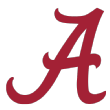
Question: With camp injuries to veteran linebackers Dylan Moses and Joshua McMillon, and freshman DJ Dale already slated to start at nose tackle, the Tide’s front seven is suddenly and alarmingly young. Is that a problem?
2 Related
Partial answer: Probably not.
Eight of the 14 members of Alabama’s front-seven two-deep for Saturday’s game against Duke were freshmen or sophomores, and there were three true freshmen among the Tide’s 10 leading tacklers for the game. But despite inexperience and an opponent willing to throw anything at the wall (Triple option! All-out spread! Everything in between!) the Tide gave up just three points and 3.8 yards per play.
Despite a slow start on offense, Alabama not only won handily but also covered a massive 34-point spread. Bama’s next four opponents are New Mexico State, South Carolina, Southern Miss and Ole Miss. It might be a while before we learn whether this young unit will cost the Tide, and by then, the youth won’t be as young.

Question: Coach Willie Taggart’s FSU debut last season was marred by some of the worst offensive line play in the country. Can you fix that in a single offseason?
Partial answer: Maybe.
Granted, the bar is pretty low. FSU lost at home against Boise State on Saturday, dropping Taggart to just 5-8 overall as the Noles’ coach. But the line did its job — for a while, anyway. The Noles enjoyed a 58 percent rushing success rate in the first half while bolting to a 31-13 lead, but basically the entire team, from blockers to defenders to playcallers, collectively lost the plot in the second half. FSU leaned heavily on the pass while trying to protect a wilting lead; and when the Noles tried to get back to the ground game, their success vanished. By the end, their rushing success rate slipped to 35 percent, and quarterback James Blackman took four sacks.
On the bright side, BSU has one of the best defensive fronts the Noles will face this year. If only because it can’t get worse, we’ll say the line might look better.
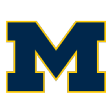
Question: Coach Jim Harbaugh brought in new coordinator Josh Gattis to modernize* an occasionally stagnant attack. Will we actually see a difference?
Partial answer: Maybe.
The debut of Gattis’ offense against Middle Tennessee suffered an inauspicious start: Quarterback Shea Patterson fumbled on the first play of the game, setting the Blue Raiders up for a short-field scoring drive.
It was fine (not amazing, not terrible, just fine) from there. Even without injured No. 1 receiver Donovan Peoples-Jones, the Wolverines scored on four of their next six drives and posted 40 points in a comfortable win. Oft-injured blue-chip receiver Tarik Black caught four balls for 80 yards, and UM’s primary tailbacks rushed 22 times for 156 yards.
Of course, scoring on lesser defenses hasn’t been the issue for UM and Harbaugh. We’ll probably have to wait a bit longer (Until Wisconsin on Sept. 21? Iowa on Oct. 5? Penn State on Oct. 19?) to get a more complete answer about Gattis’ impact.
* What do I mean by “modernize”? In Michigan’s case, it means minimal huddles (albeit with very little hurry-up), plays more aptly designed to respond to defensive formation, and more use of run-pass option and window dressing like fakes and motion. LSU’s “modern” debut was more successful than Michigan’s, but against a Georgia Southern defense that wasn’t projected as high as MTSU’s.

Question: Coach Mark Dantonio didn’t fire anyone to fix his broken offense, he just gave a bunch of assistants different job titles. Did it work?
Partial answer: Probably not.
Dantonio made the most antisocial, Dantonio-esque move of the offseason in shuffling everybody’s jobs instead of bringing in someone new. But just because it was amusing and totally in character, that doesn’t mean it’s going to work. In Friday night’s 28-7 win over Tulsa, the Spartans looked … like the Spartans. The defense was indestructible — the Golden Hurricane managed just 80 total yards — and the offense was, well, quite destructible. Against a Tulsa D that ranked 96th in defensive SP+ last season, Sparty averaged a useless 3.9 yards per play. State running backs gained 68 yards on 30 carries. Gross.
It didn’t matter against Tulsa, and because of this defense, it will probably matter only a few times this year. But State’s offense still looks like State’s offense. That’s not a good thing.

Question: The Huskers are back, right?
Partial answer: Probably not.
After winning four of its final six games in coach Scott Frost’s debut season, Nebraska’s expectations were considerably ratcheted up this offseason. But this is still a young team with a sophomore quarterback (albeit an exciting one), new players in the skill corps and a defense looking for answers. On Saturday against South Alabama, the Huskers scored on an interception return, a punt return and a fumble recovery. Despite that, they managed to beat the Jags by only a 35-21 margin, after being outgained by 38 yards and averaging a paltry 4.2 yards per play in the process. (South Alabama ranked 123rd in defensive SP+ last year, by the way.)
We shouldn’t ring any alarm bells yet — let’s see what NU does at Colorado this weekend — but Saturday was a reminder that building jobs don’t always fall perfectly into place the way Frost’s UCF build did.

Question: New head coach … freshman quarterback … are the Bison still the Bison?
Partial answer: Probably.
The Bison wouldn’t have become the dynasty of the Football Championship Subdivision if they couldn’t handle turnover, but losing both head coach Chris Klieman (to Kansas State) and quarterback Easton Stick (to the Los Angeles Chargers) was a lot. The debut for head coach Matt Entz and redshirt freshman quarterback Trey Lance, however, went about as well as anyone could have hoped. At Target Field in Minneapolis, the Bison jumped all over Butler, leading 36-0 at the half and cruising 57-10. Lance went 10-for-11 for 185 yards and four touchdowns and rushed five times for 116 more yards. Goodness.
The tests get stiffer soon enough — each of NDSU’s next five opponents is either ranked or nearly ranked, and FCS No. 5 UC Davis comes to Fargo in three weeks, but at worst, we know NDSU’s upside is as high as ever.
1:32
Justin Fields throws four touchdowns and runs in another in Ohio State’s rout of Florida Atlantic.
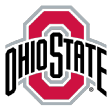
Question: Justin Fields was an all-world recruit who signed with Georgia in 2018, wasn’t asked to do much and then transferred to Ohio State. Is he ready to look the part?
Partial answer: Probably.
Credit Fields for not wasting time. On the fourth snap of his first collegiate start, he rushed 51 yards over left end for a touchdown. On the sixth snap, he threw a touchdown pass. On his ninth and 13th snaps, he threw two more. Ohio State led FAU 28-0 after just eight minutes, then put the game into mothballs and cruised. Fields finished 18-for-25 for 234 yards and four scores and rushed 10 times (not including two sacks) for 67 yards. That’ll do.
Cincinnati should offer more resistance in Week 2. But it was easy to envision Ohio State as either a top-five team or borderline top-15 or top-20 depending on the QB position, and Fields’ first outing suggests the former is more likely than the latter.

Question: Can a Lincoln Riley offense led by quarterback Jalen Hurts end up just as dominant as recent predecessors?
Partial answer: Probably. A very confident probably.
The biggest compliment you can give Oklahoma’s offense in its 49-31 win over Houston is that Houston tackled pretty well. The Cougars didn’t hand the Sooners too many free yards (aside from a busted coverage that led to a CeeDee Lamb touchdown in the second quarter). OU just took those yards via scheme and talent.
Hurts’ first effort in a Riley offense after transferring from Alabama: 20-for-23 passing, 332 yards and three touchdowns through the air, plus 16 carries for 176 yards and three more scores on the ground. Better yet, it didn’t feel like he was playing outside of himself. He was just being Jalen Hurts. In a Lincoln Riley offense. With amazing blocking everywhere you look. And players like Trey Sermon (11 carries for 91 yards), Charleston Rambo (three catches for 105), and Lamb (two for 46) in the skill corps.
But he did lose a fumble at one point. So there’s still room for improvement.
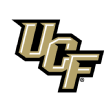

Question: The heavyweights of the Group of 5 are each starting new QBs in 2019 — Notre Dame grad transfer Brandon Wimbush for UCF and freshman blue-chipper Hank Bachmeier for Boise State. Will they keep these respective trains a-rolling?
Partial answer: Probably.
Granted, there’s quite a difference between a veteran from a high-major school starting off against an FCS opponent (UCF 62, Florida A&M 0) and a true freshman starting his first game in Doak Campbell Stadium (BSU 36, FSU 31). But despite missteps — Wimbush (who suffered pass efficiency issues in South Bend) completed just 52 percent of his passes, and Bachmeier took five sacks and fumbled twice — both got passing grades. Wimbush averaged 14 yards per completion with a pair of TD passes, and Bachmeier threw for 407 yards and led an 18-point comeback. Not bad.
Another true freshman — UCF’s Dillon Gabriel — could insert himself into this conversation (he was 9-for-13 for 127 yards and three scores against FAMU), but Wimbush passed his first test, at least.
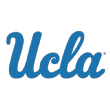
Question: Is quarterback Dorian Thompson-Robinson ready to lead a second-year scoring breakthrough for head coach Chip Kelly?
Partial answer: Probably not.
Justin Fields will be the second blue-chip sophomore Cincinnati faces this year, but the Bearcats did quite a bit of damage against the first one: Thompson-Robinson. He made their job pretty easy, though.
UCLA entered the season as one of the biggest mysteries in FBS, but Thompson-Robinson basically picked up where he left off as a freshman. The last time we saw him, he was going 9-for-23 with a 94 passer rating against Oregon. On Thursday, he went 8-for-26 with a 91. He also let the ball squirt out of his hands, unforced, in two different failed red zone opportunities, and the Bruins fell 24-14.
Fumbles are random occurrences, but at this point, inefficient performances from DTR are not. And now he has to face an always-tricky and physical San Diego State defense before games against ranked Oklahoma and Washington State. Yikes.

Question: Is the Huskies’ defense still historically awful?
Partial answer: Maybe not!
The Huskies were downright awe-inspiring in 2018, allowing at least 38 points and 516 yards in 11 of 12 games and giving up 50.4 points per game for the season. But they allowed just 21 points in defensive coordinator Lou Spanos’ debut.
Sure, it was against Wagner, an FCS team that went 4-7 last year. And sure, after going nowhere for most of the game, Wagner drove more than 80 yards for a touchdown on two of its last three possessions in a 24-21 UConn win. Much larger challenges await as well — Week 2 opponent Illinois gained 400-plus on Akron, and a trip to UCF looms — but you have to start somewhere, and giving up 185 total yards and two offensive scores would have qualified as progress even if it had come against East Hartford High.

Question: Did hiring offensive coordinator Graham Harrell fix the Trojans’ sketchy offense?
Partial answer: Maybe, but now he has to do it again.
Things couldn’t possibly have started better for Harrell and the Trojans’ offense. With nary a third-down conversion required, quarterback JT Daniels led touchdown drives of 81 and 47 yards as USC hopped to an immediate 14-0 lead over Fresno State.
USC scored on only one of its next five drives, though, and then Daniels was lost for the season with a knee injury. Freshman backup Kedon Slovis led one scoring drive, and the run game was sturdy enough — Vavae Malepeai and Stephen Carr rushed 29 times for 190 yards — to get the job done in a 31-23 win. Still, the shine wore off a bit after a spectacular start. And now Harrell has to help the Trojans manufacture points, with a freshman QB, against a killer quintet of games: Stanford, at BYU, Utah, at Washington, at Notre Dame.
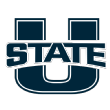
Question: Quarterback Jordan Love is maybe the most exciting player in the mid-major universe, but he lost almost all of last year’s supporting cast, including coaches. Can he thrive with all this newness?
Partial answer: Probably.
Granted, this one was more of a personal curiosity than a national storyline, but USU’s 2018 offense was one of the country’s most seductive, and I was hoping the Aggies would have enough talent around Love to keep things exciting.
USU ended up losing a heartbreaker at Wake Forest (one of the few Mountain West upset bids to fall short in Week 1), but Love still completed 33 passes for 416 yards, and he found a major go-to in Utah transfer Siaosi Mariner (eight catches, 118 yards). Three picks were all sorts of costly — the first two set up 10 Wake points, and the third ended the game — but the upside is still obvious, and Mariner could be a great dance partner.

Question: The Hokies bottomed out defensively last year, beset by both inexperience and injuries. Can simple continuity and development fix last year’s woes?
Partial answer: Maybe.
Legendary defensive coordinator Bud Foster’s final season at Tech began with the Hokies allowing 35 points and 432 yards in a one-score loss at Boston College. That wasn’t great, but it also probably wasn’t as bad as it seemed.
Tech held BC to just 3.5 sack-adjusted yards per carry, and after averaging 9 yards per play in the first quarter, the Eagles averaged 4.2 thereafter. If not for horrible luck with fumbles — the Hokies recovered zero of the game’s four loose balls, and two fumble-aided, short-field drives made the difference for BC — Tech possibly wins. Of the Hokies’ next five opponents, two are FCS schools, and the other three combined to average 16 points per game and 4.4 yards per play in Week 0/1. The Foster defense could look like the Foster defense again soon.
Credit: Source link
